[javascript protected email address]
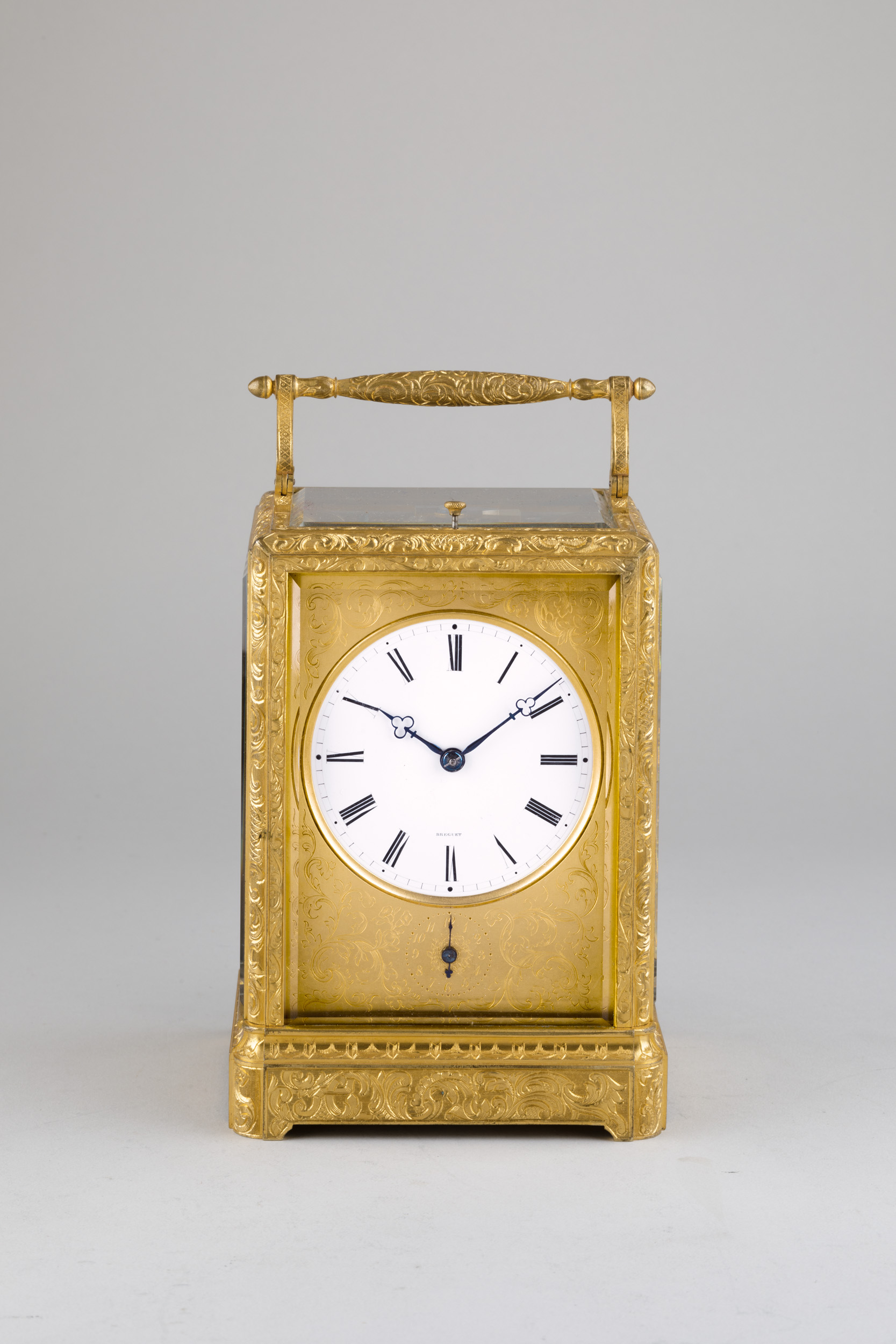
Breguet Neveu & Compagnie, Paris No. 921

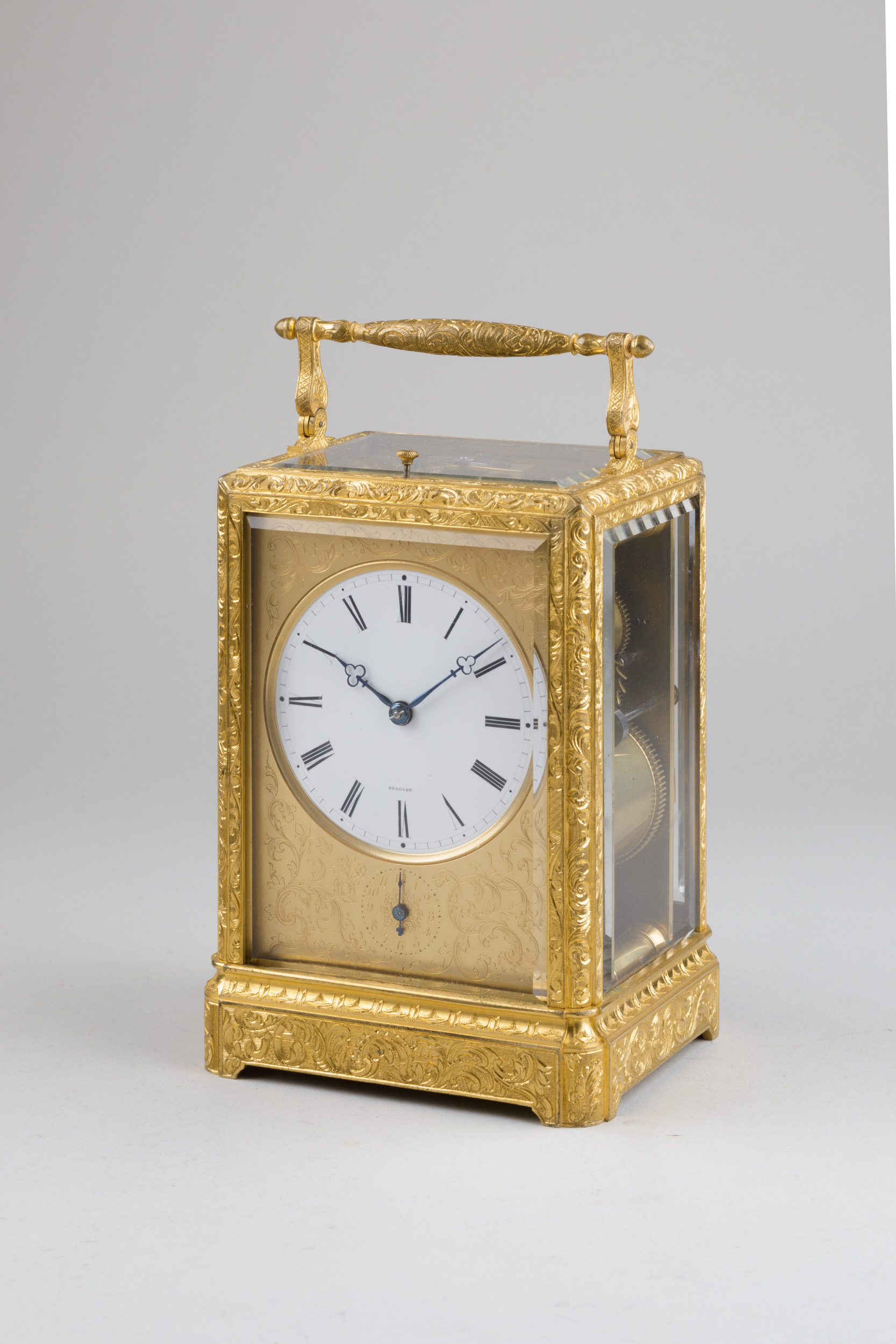
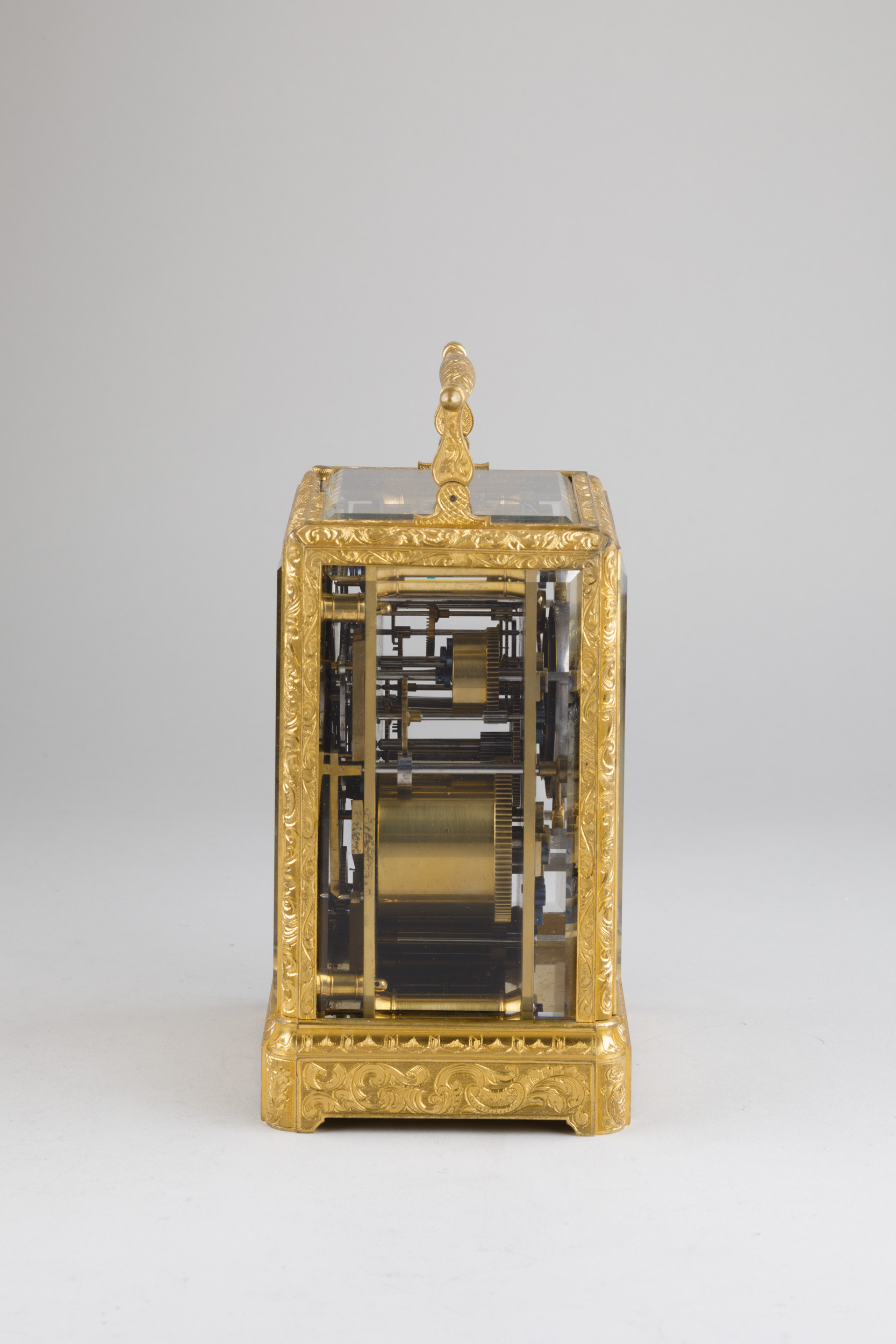
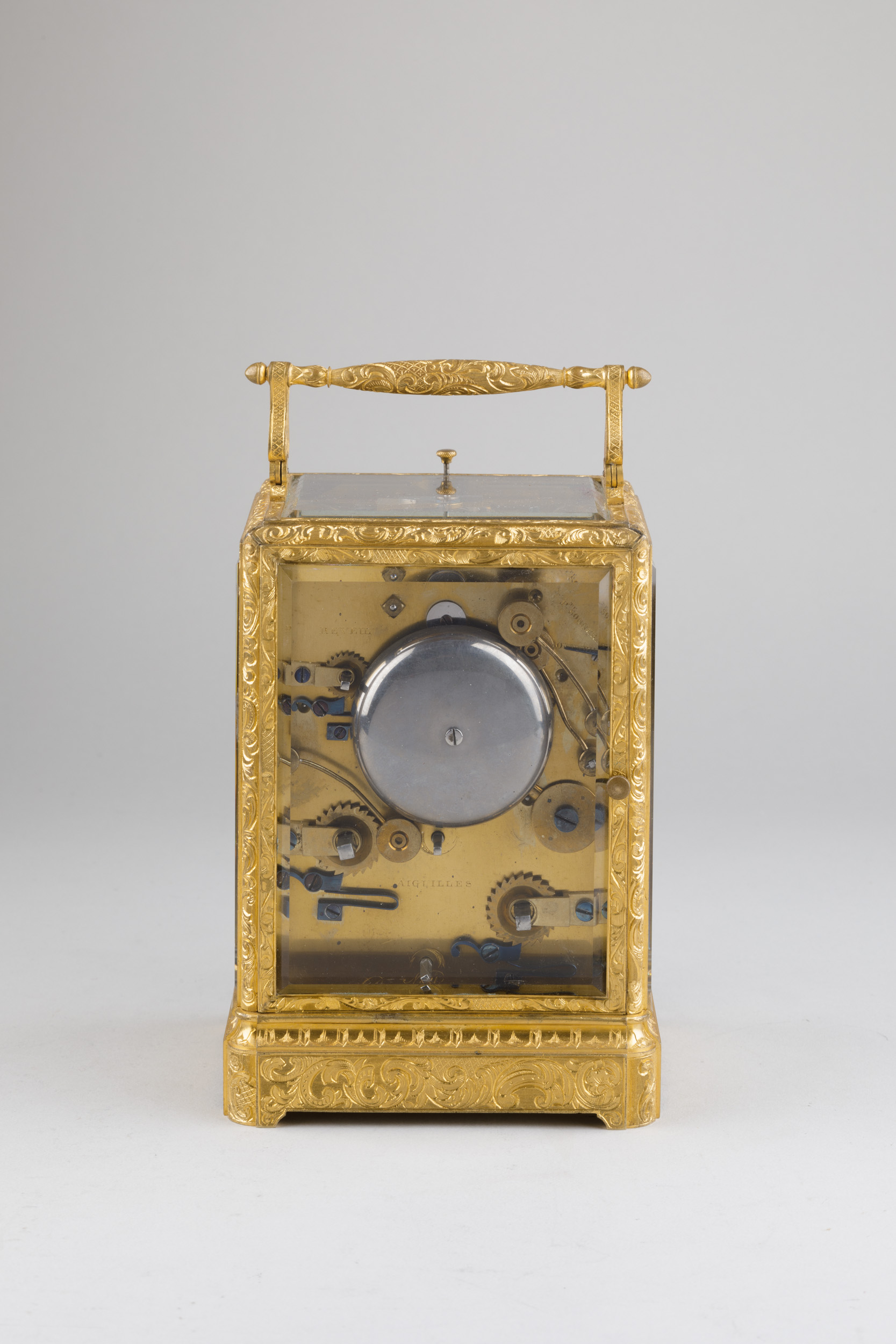
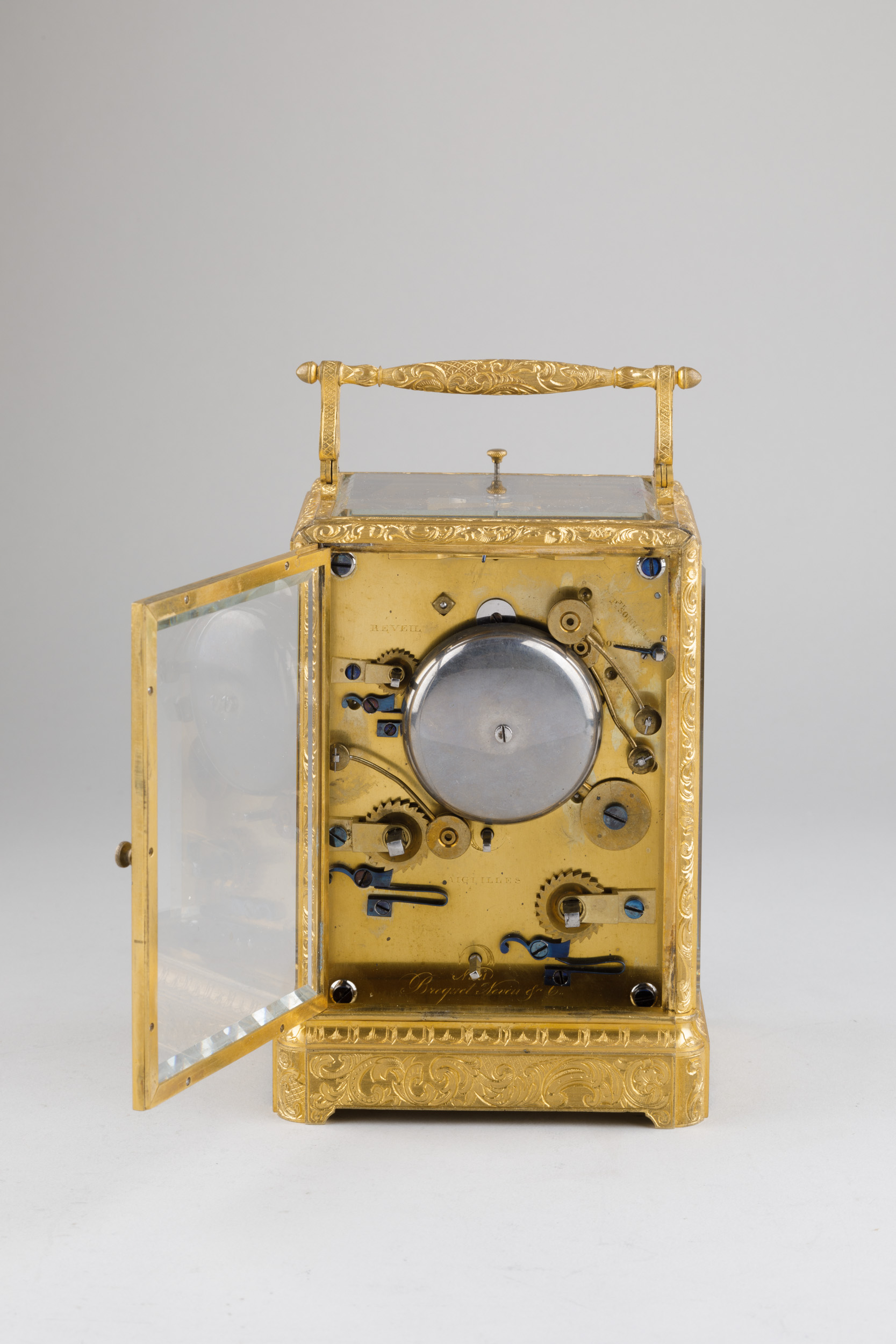
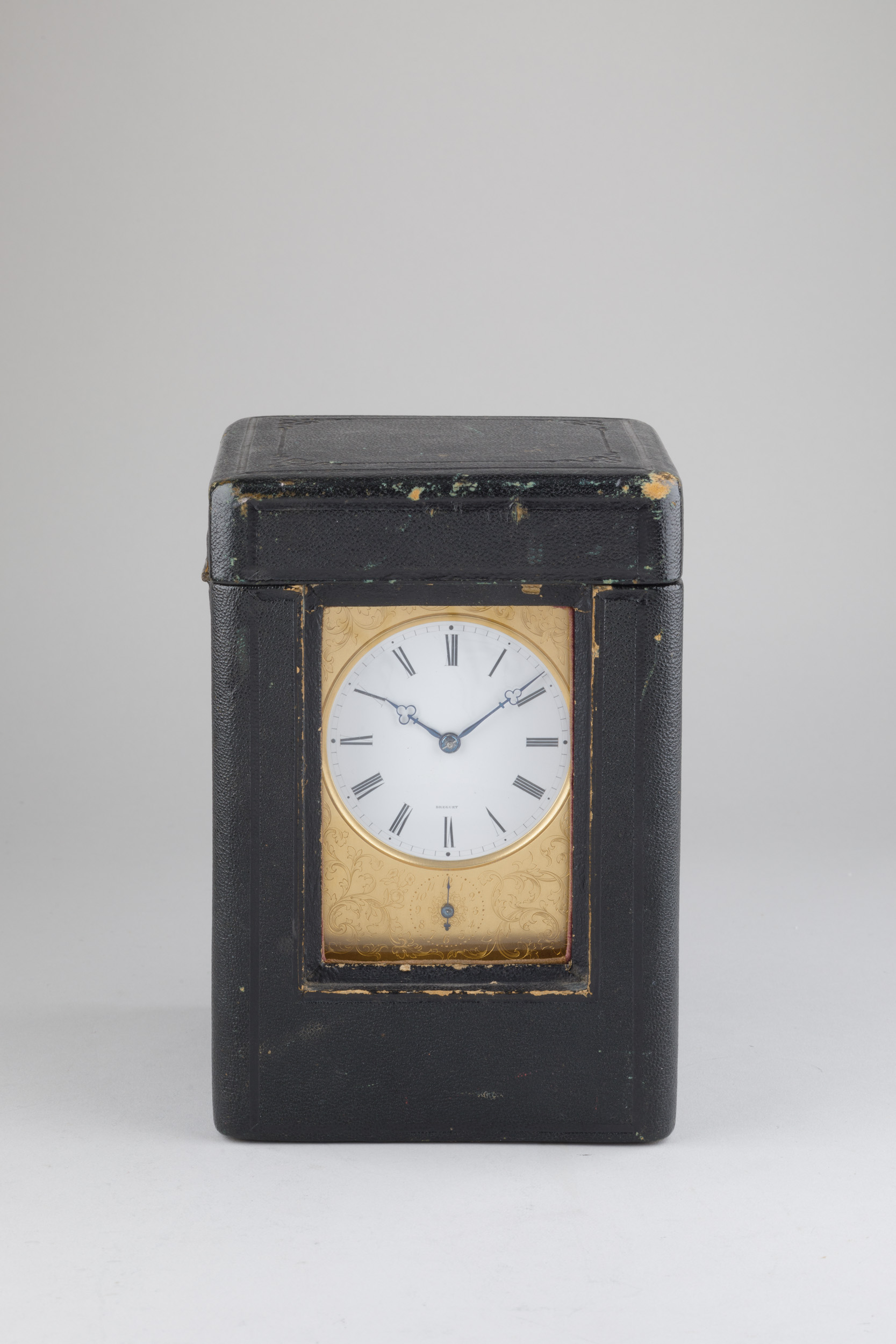
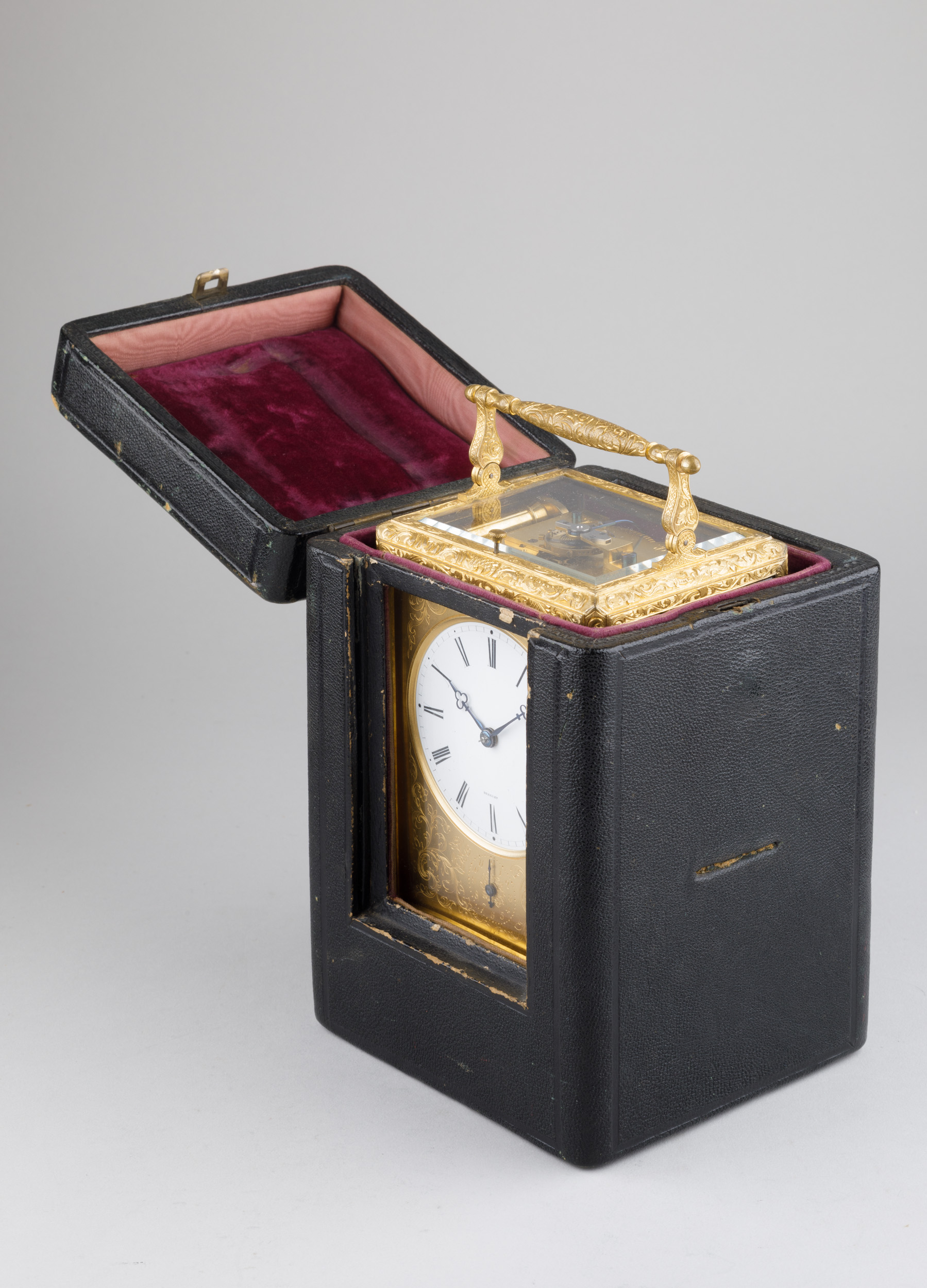
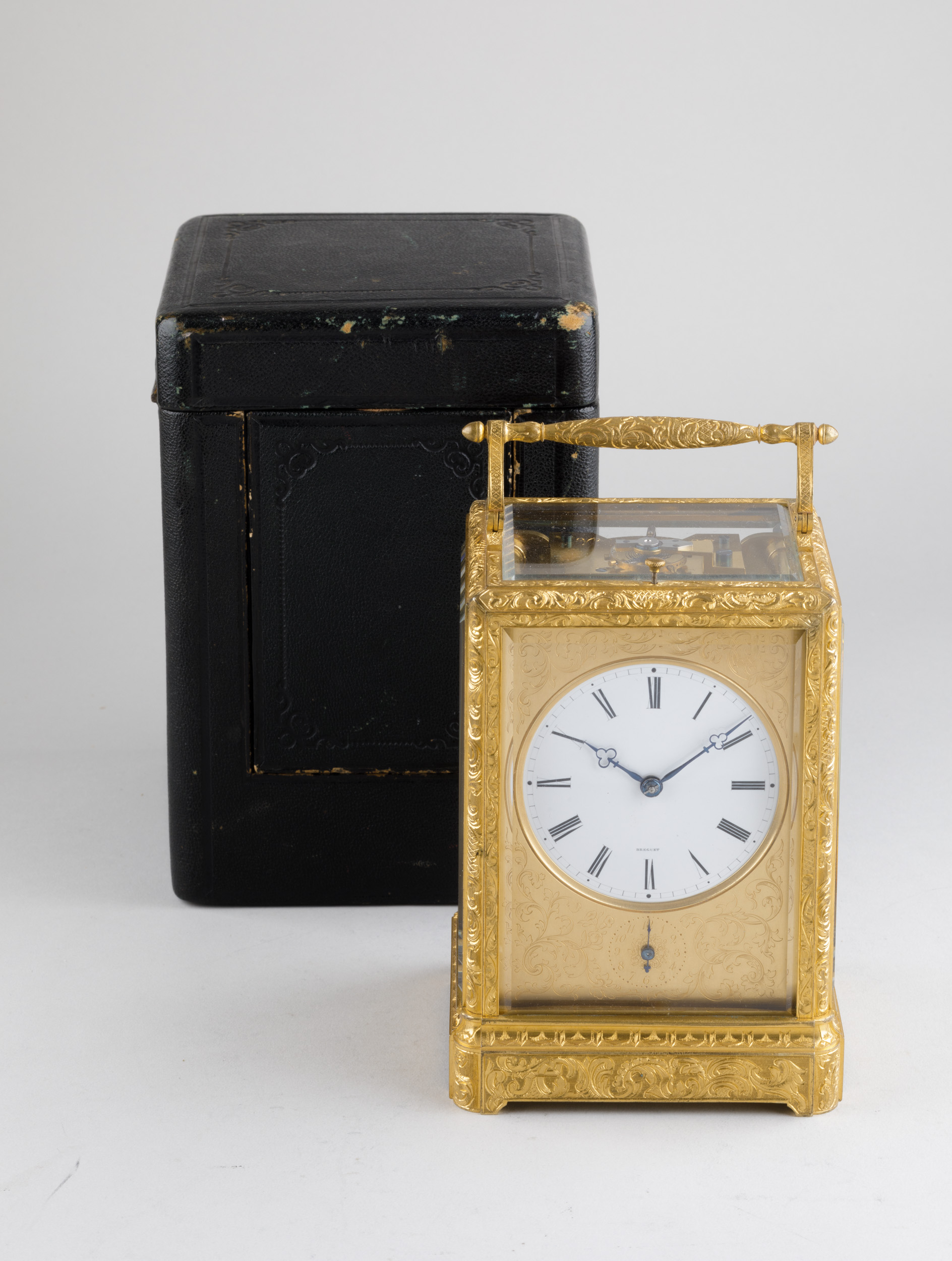
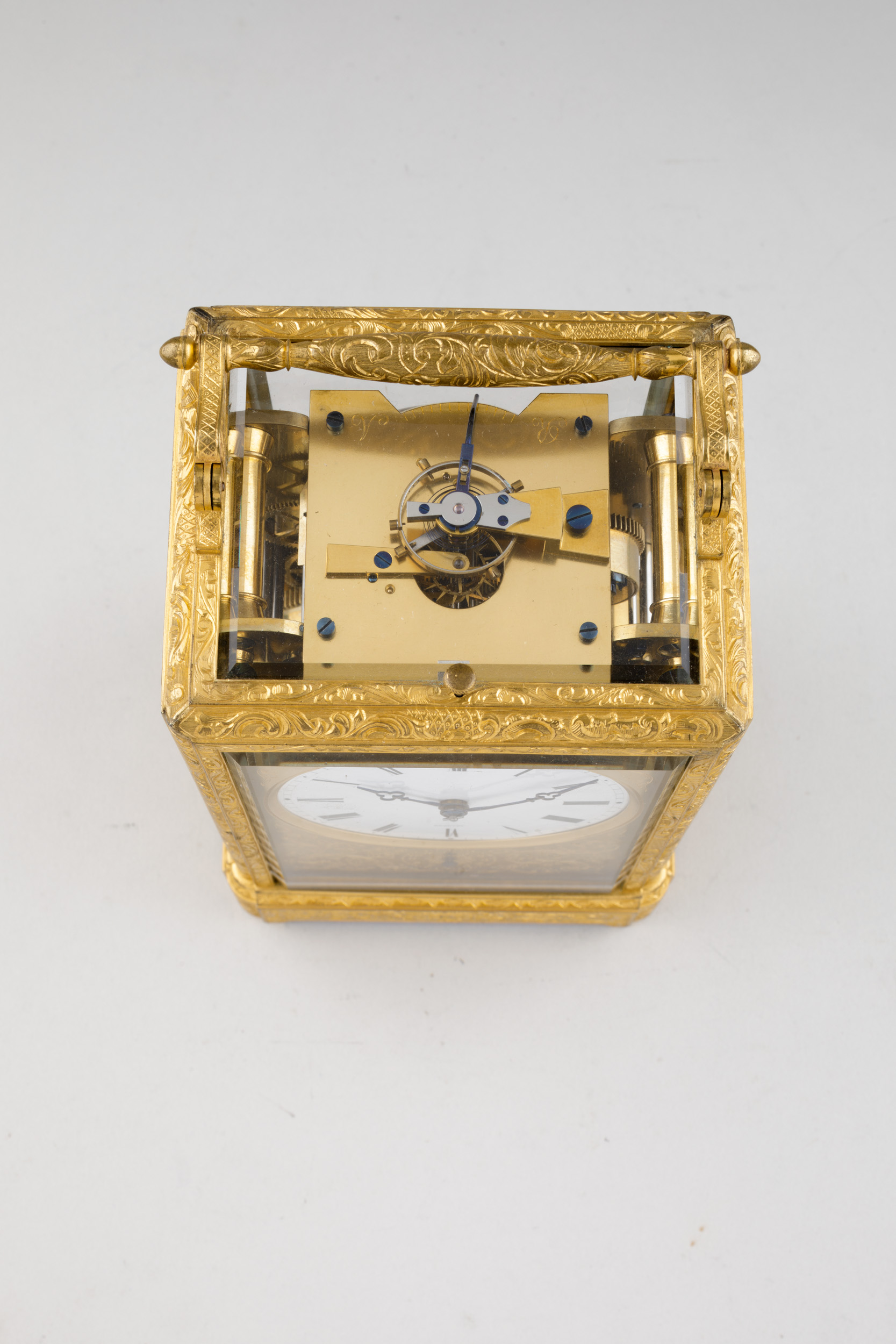
Circa 1840
Sold
6 inches high
A very fine engraved one-piece grande & petite sonnerie bell-striking carriage clock with duplex escapement. Case Of one-piece form engraved overall with scrolling foliage, folding handle to the top inset with a large escapement viewing aperture, glazed sides and rear door, repeat button at the top Dial Signed Breguet on the white enamel chapter disc with Roman numerals and trefoil blued steel hands, alarm ring beneath within a foliate -engraved mask. Movement Of very high quality with four cylindrical pillars, twin going barrels, the grande and petite sonnerie strike on two bells on the backplate with selection lever to the upper right corner of the backplate; the going train with a very large gilt-brass platform with a fine quality duplex escapement with blued spring and cut bimetallic compensated balance. The backplate engraved Breguet Neveu & C. No. 921 Together with the accompanying leather travelling box Provenance According to Breguet's records the present clock was completed in 1841 and sold on December 31, 1844, to Count J. de Montalvo for the sum of 1400 Francs. The history of the carriage clock industry is indebted to its most esteemed clockmaker Abraham-Louis Breguet (1743-1823) whose first carriage clock was delivered to Napoleon Bonaparte in 1796 shortly before he embarked on his Egyptian campaign. Breguet's ability for quality and innovation earned him international recognition. Even after his death the firm's outstanding reputation continued and for this reason was patronized by royalty, aristocracy and leading society figures. The present clock is no exception for it was purchased by Count Montalvo in 1844. In that same year the firm, then known as Breguet Nevue also supplied a comparable grande and petite sonnerie carriage clock to Prince Anatole Demidoff. Abraham-Louis Breguet set up his business circa 1775 in the heart of the Parisian clockmaking district at Quai d'Horloge. At first the business was known as Breguet and remained so until he was joined by his son Louis-Antoine Breguet (1776-1858) in 1807 when it was renamed Breguet et Fils. When Louis-Antoine retired in 1833, his son Louis-Clement-François (1804-83) went into partnership with one of his relatives to form Breguet Nevue Compagnie. Eventually his son called Antoine-Louis took over. Since he was the last family member wishing to continue the business, he then took his English foreman Edward Brown into partnership and in 1870 Brown became the proprietor of the esteemed House of Breguet. Following the formation of Breguet Nevue, the firm enjoyed an illustrious patronage; for instance in August 1834, they sold a Pendule Sympathique to King Louis-Philippe and also in the same year a grande and petite sonnerie carriage clock to Count Anatole Demidoff (who later became a Prince when he married Princess Mathilde Bonaparte). The following year, 1835 the firm sold a carriage clock to Madame Baudin that was later owned by Sir John Prestige before it entered the British Museum Collection. In addition to the present example and that purchased by Anatole Demidoff in 1844, other carriage clocks from that year included several others with a chronometer escapement, either with grande and petite sonnerie or sonnerie ordinaire, which were listed in Breguet Nevue's advertisements for that year.
